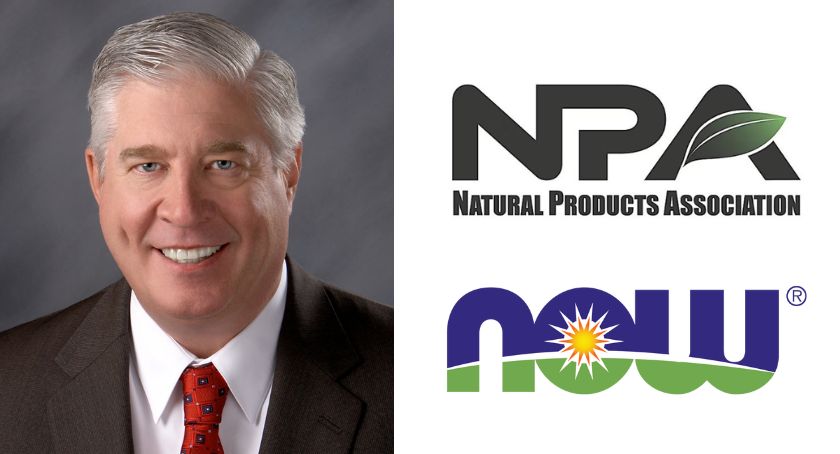Exclusives
Vitamin D Fortification
Heightened interest in vitamin D research and advances in fortification technology make vitamin D a nutrient to watch these days.
By: Judith Jarvis
With few natural food sources of vitamin D, vitamin D-fortified foods play an important role in helping consumers meet recommended intakes. Vitamin D supports calcium metabolism, and both of these nutrients are critical for bone health throughout life. Vitamin D helps maintain normal serum calcium and phosphorous levels by enhancing their absorption. Vitamin D also works with parathyroid hormone to help maintain adequate serum calcium and phosphate levels to enable bone mineralization. Unlike other vitamins, however, vitamin D can be synthesized in the skin from sunlight.
Since the 1930s, voluntary fortification of milk with vitamin D has been instrumental in the eradication of rickets, a vitamin D deficiency disease that leads to stunted growth, bowed legs and delays in motor development in children. Milk was chosen as the fortification vehicle because it was widely available, palatable to young children, and rich in calcium, phosphorus and vitamins. Now, more than 80 years later, we know that milk’s key bone-building nutrients include calcium, vitamin D, magnesium, potassium, phosphorus and high-quality protein. Although rickets ceased to be a public health issue in the U.S. many years ago, there has been a resurgence due to both vitamin D and calcium deficiency.
Vitamin D Deficiency Today
Serum levels of 25-hydroxy vitamin D have long been considered to be the best indicator of vitamin D status, and today vitamin D deficiency and insufficiency affects all age groups. There is no consensus in the medical community on the blood level of 25-hydroxy vitamin D for optimal health. However, most vitamin D researchers define vitamin D deficiency in adults as a blood level of 25-hydroxy vitamin D of less than 20 ng/mL. Based on studies of calcium metabolism, a blood level of 25-hydroxy vitamin D of 21-29 ng/mL can be considered insufficient, while a level of 30 ng/mL or greater is considered sufficient. Vitamin D toxicity is extremely rare and has been observed at serum levels of 25-hydroxy vitamin D greater than 150 ng/mL.
Using similar cutoffs to those above for deficiency and insufficiency, an estimated 9% (7.6 million) of children and young adults ages 1 to 21 years were vitamin D deficient and 61% were vitamin D insufficient (50.8 million) in 2001-2004. Children who drank milk daily or who took vitamin D supplements were less likely to have low vitamin D levels.
Limited exposure to sunlight and use of sunscreens, age-related decrease in cutaneous synthesis, obesity (vitamin D is sequestered in fat stores), and low intake of milk or other vitamin D-fortified foods or supplements can contribute to low vitamin D status.
Many Americans today are not meeting recommended dietary intakes (adequate intake) for vitamin D as established by the Institute of Medicine in 1997 (see Table 1). In fact, only three out of 10 individuals (>1 year old) consume the recommended daily intake of vitamin D, according to national survey data (NHANES 2005-2006), and most individuals over 50 years do not achieve adequate intakes. Similarly, many Americans are not achieving the recommended intakes of calcium.
Table 1
DRIs and % Americans with Usual Intakes above Adequate Intake
Adapted from the Dietary Reference Intakes (DRI): Recommended Intakes for Individuals. Food and Nutrition Board, Institute of Medicine. 1 mg cholecalciferol = 40 IU vitamin D.
Adapted from What We Eat in America. Estimates based on 24-hr dietary recall data from 8437 individuals ( >1 year) and 327 pregnant females 19-50 years (NHANES 2005-2006); includes food and water, but not dietary supplements, medications or vitamin D from sunlight. Food sources of vitamin D values are from vitamin D addendum to the USDA Food and Nutrient Database for Dietary Studies 3.0.
*** NA, not available.
Emerging Health Benefits for Vitamin D
No longer are the consequences of vitamin D deficiency limited to bone health—rickets in children or osteomalacia (bone softening) or osteoporosis in adults. Significant as they are, researchers have found that vitamin D’s skeletal effects are just the tip of the iceberg. A recent systematic review of the evidence for vitamin D status and health outcomes reports that bone mineral density, fracture prevention, lower-extremity function and falls have the strongest supporting evidence.
However, other areas of active vitamin D research include type 1 diabetes, multiple sclerosis, rheumatoid arthritis, hypertension, cardiovascular disease and many common cancers, with emerging evidence suggesting a protective effect of vitamin D on periodontal health and colorectal cancer.
Much more work is needed to establish what circulating blood level of 25-hydroxy vitamin D will help achieve the various health benefits and how much vitamin D intake is needed to achieve optimal vitamin D blood status.
Are Current Vitamin D Intake Recommendations Adequate?
An Institute of Medicine committee of 14 experts is currently reviewing the evidence for potential revision of the current Dietary Reference Intake (DRI) values for vitamin D and calcium, both of which were established in 1997 for the U.S. and Canada.
Their review will consider both chronic and non-chronic disease indicators and evidence on indicators of adequacy and on indicators of adverse effects from excessive intake. The committee’s report is expected to be available in May 2010.
Vitamin D Fortification of Foods
Whether or not the DRIs for vitamin D are increased, vitamin D fortification of food remains an important public health strategy for achieving recommended intakes. Only a few foods such as oily fish (e.g., salmon, mackerel, herring) and cod liver oil are naturally rich in vitamin D. However, virtually all fluid milk in the U.S., many ready-to-eat cereals, milk substitutes and yogurts, and some cheeses, juices and spreads are fortified with vitamin D—each generally providing between 10-25% of the Daily Value.
Two forms of vitamin D are used in fortified foods and dietary supplements: vitamin D2 (ergocalciferol) and vitamin D3 (cholecalciferol). When a food is fortified with vitamin D or a nutritional claim is made, the type of vitamin D must be listed in the ingredient statement. While both forms raise 25-hydroxy vitamin D levels, vitamin D3 may be more than three times as effective at maintaining those levels for a longer period of time. While optional, nearly all milk sold in the U.S. is fortified with vitamin D3.
Vitamin D fortification of foods is regulated in the U.S. in accordance with FDA’s Code of Federal Regulations, and only select foods are authorized to fortify with vitamin D. Vitamin D (vitamin D2 or D3, in crystalline, resin or crystal form) is affirmed Generally Recognized as Safe (GRAS) at specified maximum levels of safe use for certain food categories—breakfast cereals (350 IU/100 g); grain products and pastas (90 IU/100 g); milk (42 IU/100 g); and milk products (89 IU/100 g). Vitamin D is also affirmed GRAS for use in infant formula and as an optional ingredient in margarine. GRAS regulations pertain to safety and not to the composition of standardized foods.
“Standard of Identity” regulations prescribing the composition of the standardized foods come into play for some foods and specify the levels of vitamin D when fortifying. For example, the standard of identity for milk specifies that if vitamin D is added, it must be at 400 IU per quart.
Food additive petitions also have led to the authorization of vitamin D fortification for some foods. These include supplementation of calcium-fortified fruit juices and fruit juice drinks with vitamin D3, soy-based beverages and products with vitamin D2, and of cheese and cheese products (excluding cottage cheese, ricotta cheese, and hard grating cheeses, such as Parmesan and Romano) with vitamin D3. Vitamin D also may be added to olestra to compensate for any interference with absorption of fat-soluble vitamins.
Major Food Sources of Vitamin D in the U.S. Diet
The Dietary Guidelines for Americans encourages consumers to get their nutrients from food and to choose nutrient-rich foods first. Although ready-to-eat cereals, juices and spreads, and select other foods are fortified with vitamin D, dairy products supply the majority of the vitamin D in the diet—nearly 70% of the daily intake in children 2 to 18 years old (see Table 2). The next major dietary sources are from the meat, poultry and fish group and the grain group, which includes vitamin D-fortified breakfast cereals.
Table 2
Contribution of Foods to Vitamin D Intake in the U.S.
Food sources of vitamin D were determined using NHANES, 2003-2006 data and the recently released Vitamin D Addendum to USDA Food and Nutrient Database for Dietary Studies 3.0. Vitamin D intakes were determined for all subjects 2 years and older with complete reliable 24-hr recall interviews on Day 1 (n=16,822).
Milk is the No. 1 dietary source of vitamin D, calcium and phosphorus, for Americans 2 years and older. Thus, increasing consumption of vitamin D-fortified dairy foods is a simple strategy to help Americans meet recommended intakes of vitamin D and other important bone-building nutrients. Advancements in fortification technology will offer further options to help meet intakes.
Technology Advancements
Companies seeking to add vitamin D to their products need to follow best manufacturing practices. For fluid milk, the process for adding vitamins A and D is outlined in “Appendix O” of the “Pasteurized Milk Ordinance.” Companies also need to address issues of stability/degradation over time, how to create even distribution throughout the food or beverage, and how to minimize losses of vitamins in production. New technologies are being developed to protect vitamin D from degradation by UV light and refrigeration, to achieve uniform product dispersement, and to improve colloidal stability. Research will continue to uncover improved methods and processes for dairy processors and food and beverage manufacturers to incorporate vitamin D into their products.
An example of recent fortification research focused on the addition of vitamin D to cheese. Carl Brothersen and colleagues at the Western Dairy Center at Utah State University recently completed a project evaluating methods for incorporating vitamin D in natural cheddar cheese. His team evaluated three types of vitamin D3 preparations: a commercially available emulsion of vitamin D used for fortification of milk (VitaSystems VS-AD200, Continental Custom Ingredients, Inc.), an encapsulated vitamin D preparation in powdered form (BASF, Mount Olive, NJ), and a liquid preparation in an oil carrier (BASF, Mount Olive, NJ). Each preparation contained 400 IU/L of vitamin D3, and was added to cheese milk using two methods: 1) mixing directly in the cheese milk; or 2) homogenizing the preparation in 10% of the cheese milk.
Retention of vitamin D in the cheese curd is shown in Figure 1. Homogenization did not improve retention of the emulsion, but did greatly improve retention of oil. The best method was mixing the powder directly in the cheese milk. Some of the vitamin D added to the cheese milk is lost in the whey, which may impact down-stream whey processing and limit the utilization of these whey products.
Figure 1
Vitamin D retention in emulsion, oil and powder
Retention of vitamin D in cheddar cheese curd fortified with emulsion, oil and powdered preparations, and incorporated in the cheese milk by homogenization in the milk, or non-homogenization.
Conclusion
With many Americans not achieving recommended intakes of vitamin D, increased consumption of vitamin D-fortified foods that are widely available and commonly consumed, like dairy products, can help consumers achieve adequate vitamin D status. Today’s product innovators who hope to capture the health and wellness market would be wise to educate their consumers on the benefits of vitamin D and market their products accordingly.
References furnished upon request.
About the Authors: Judith Jarvis is director of Dairy Science Communications, and Nancy Auestad is vice president of Regulatory Affairs for the National Dairy Council.
























